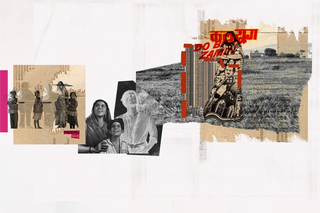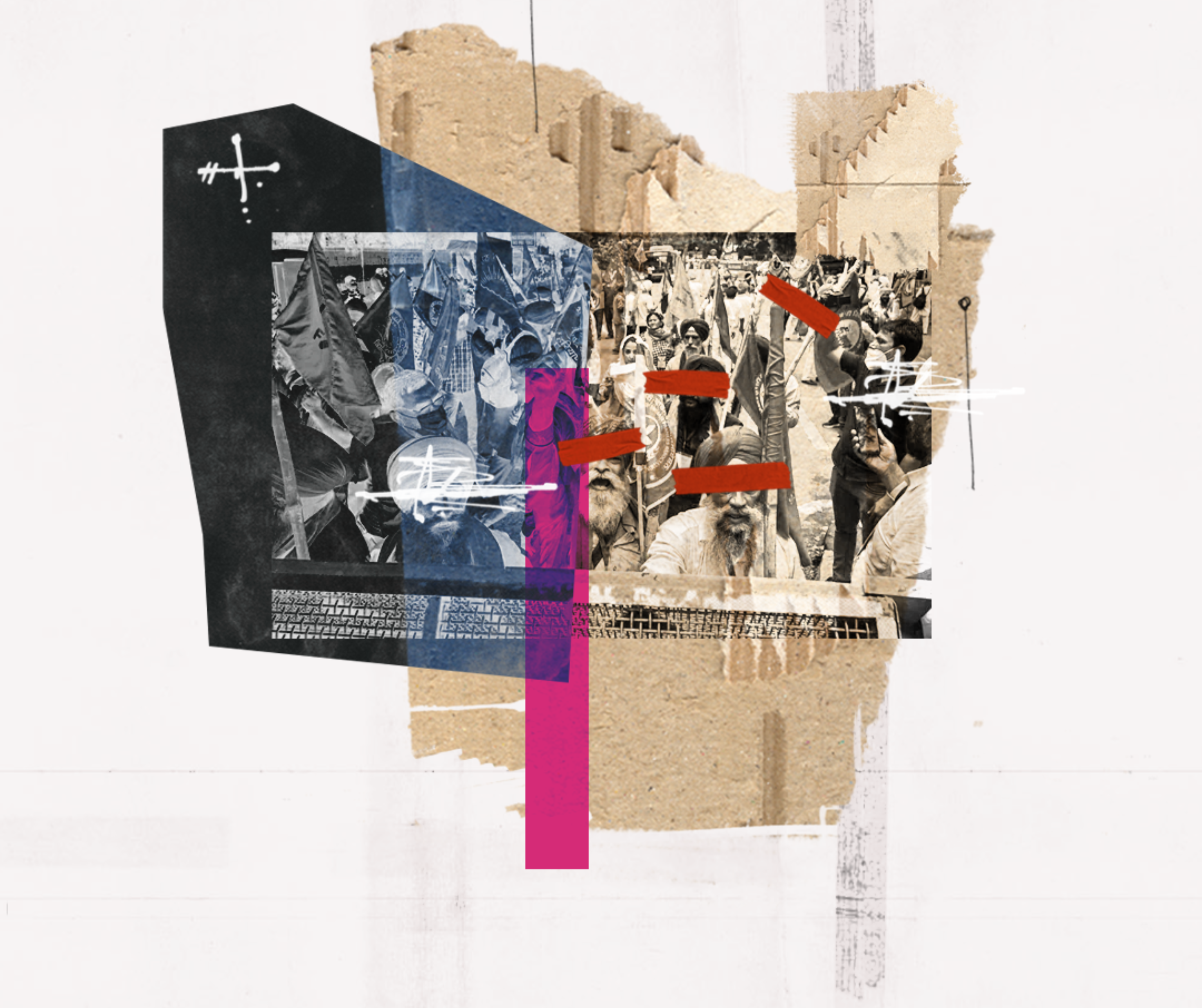
When Did Bollywood Abandon the Farmer?
Often, farmers’ distress is often just an instrument to supply conflict to a film. Bollywood’s “utility” of farmers has considerably diminished.

In one of the most shrewdly-written scenes in Anusha Rizvi’s Peepli Live (2010), Budhia (Raghubir Yadav) tries to convince his younger brother Natha (Omkar Das Manikpuri) to kill himself. The brothers have been told that a farmer suicide leads to a monetary compensation from the government, which might enable them to repay their debts and save their farm lands. Rizvi’s film – primarily satirising India’s political machinery and the deteriorating state of 24*7 TV news (which have hit dystopian levels in the last decade) – spends its entire runtime chasing a spectacle: Natha’s suicide being telecast live.
It would take 13 more years for Manikpuri’s farmer character to die on screen. In Atlee’s Jawan (2023), Manikpuri plays a debt-ridden farmer (again!), who hangs himself – the camera distastefully focusing on his asphyxiated face. The journey from Peepli Live, a satire built on the issue of farmer suicides, to Jawan, where a farmer suicide is merely a bullet-point social issue for the film’s saviour to avenge, is telling. It encapsulates how farmers have all but disappeared from our screens, any little characterization relegating them to the background.
Once occupying a crucial space in the heart of Hindi cinema, in films like Do Bigha Zameen (1953) and Mother India (1957), the farmer has been reduced to the sparsest of subplots, if not completely invisibilised today. Since 2000, one can practically count the number of films where farmers have played a character of significance: Ashutosh Gowariker’s Lagaan (2001), Swades (2004) and Kiran Rao’s Laapataa Ladies (2023) are among the handful mainstream films featuring farmers. And even then, farmers’ distress is often just an instrument to supply conflict to the film, highlighting how Bollywood’s “utility” of farmers has considerably diminished.
Most recently, Jolly LLB 3 co-opted a farmer suicide to fuel the franchise’s farcical courtroom drama. Lagaan is more about cricket than farmers, and Laapataa Ladies’ focus is women’s dignity in rural India, with a character’s curiosity in horticulture acting as a throwaway subplot.
Indeed, mainstream films have moved away from villages altogether, especially after the 1991 reforms – which opened up the Indian economy. By the 1980s, even “parallel cinema” – possibly fighting labels of looking drab, repetitive, helmed by the likes of socially-conscious filmmakers like Govind Nihalani and Shyam Benegal – migrated from villages (Nishant, Manthan, Aakrosh) to markedly urban settings (Party, Kalyug, Bhumika). A section of the well-off farmer class, presumably beneficiaries of the Green Revolution initiative, began to appear in mainstream films like Dilwale Dulhaniya Le Jaayenge (1995), where they were co-opted as vessels of nationalism. These characters were meant to reflect (primarily North Indian) tradition, culture and rootedness, even though they were far from the grassroot issues plaguing farmers even then.
Are films merely reflecting the neglect farmers have faced from society over the last few decades?
.png?rect=0,2,2938,2461&w=320&h=268&auto=format)
The erosion of the farmer from the film landscape seems gradual and deliberate, aided by a post-liberalisation society obsessed with chasing everything they saw on their newly bought cable TV. In the last decade or so, the few stories set in villages, like Panchayat , feel more like exceptions than the rule. Simultaneously, Tier 3, Tier 4 towns have flourished on screen, courtesy Rajkummar Rao, Ayushmann Khurrana, and the small-town gangster subgenre birthed by Anurag Kashyap’s Wasseypur films. Are films merely reflecting the neglect farmers have faced from society over the last few decades? Perhaps their fading from our screens helps explain the insensitivity towards the 2020-2021 farmers’ agitation.
Culture critic and translator Trisha Gupta remembers witnessing the shift from the single-screen era to multiplexes as a college student during her weekly sojourns to Anupam (a theatre complex in Saket, New Delhi). “There was a rule in place by the government, which lasted a few years, that the first few rows of the multiplex would be reserved and sold for Rs 7,” she remembers. “30 years later, it’s almost inconceivable that the auto I take to the multiplex, even the auto driver might want to come in and watch a film.” According to Gupta, as the Hindi film industry segregates the “classes” from the “masses” (with urban centres dictating storytelling choices for all films), the “masses” aren’t part of the exhibitors’ strategy anymore. Even if they are, Gupta thinks their money isn’t important enough for consideration.
Based on the Hindi films of the 90s, as our society raced towards the fruits of capitalism, there was little room for performative niceties – or in some cases, even basic decency. “[P]eople wanted more aspirational stories, around NRIs moving somewhere,” says filmmaker Kinshuk Surjan, who made the deeply-felt and technically-astounding Marching in the Dark (2024), a documentary following a few widows of farmers who killed themselves. Surjan cites Pavan K Varma’s book The Great Indian Middle Class, which observes how during the Nehruvian era, there was a ‘moral’ framework for how we thought and spoke about each other. The middle-class abandoned that framework as soon as they could, and worked hard to isolate themselves from the crowd. “[The book] talks about how ‘rural’ became a dirty word by the 1980s,” recounts Surjan. In the book, Varma Surjan explains why he sees India as a neo-colonial society, an outrageous opinion (by his own admission). “After Independence, (the) power just shifted from Britishers to a certain section of the society. I say this because of how we exploit the rural areas, and for how simply uninterested we are in the lives of others.” Films used to be based on socio-political convictions. With the demise of the parallel cinema movement and “message-driven” cinema being looked down upon, mainstream Hindi cinema settled for the (often) apolitical and vague adjective of being “entertaining” by the 90s. Although there have been exceptions like Swades (2004) and Panchayat, Surjan isn’t amused by the narrative pushed by them, “where villagers are so badly organised and stupid, they can’t do anything until an outsider comes and shows them the mirror.” He believes that a change can come if a slew of films speak with the farmers, instead of on their behalf. Even films with a rural setting that have found mainstream acceptance – like Laapataa Ladies – portrays its characters in broad strokes and mollycoddles its audience to the point they forget about their inherent disinterest and culpability in rural plights.
Gupta plays the devil’s advocate, saying it’s not like farmers were queuing up outside theatres even 30 years ago. But the migrant labour in the city still had a connection to rural life. With that strata getting excluded from most releases by multiplex chains, the films are being made for an audience that is increasingly urban. “I’d written a column recently where I’d argued that filmmakers from the early years lived in cities like Mumbai, Kolkata and Lahore, but they still had some connection to the village,” Gupta notes, “That’s been erased over the next few generations.” She contends how for a majority of the multiplex-going audience, their fathers grew up in cities, and thus the connection to the village is more diluted than ever.
This is perhaps why the farmer primarily appears in regional films today. Filmmaker Jayant Somalkar’s Sthal (2023), for example, depicts the marketplace of arranged marriages in rural Maharashtra. The protagonist’s father is a cotton farmer, and Somalkar says the setting came almost like second nature to him because he comes from a similar background. It’s hard to imagine a film like this platformed by a mainstream Hindi studio today, especially because of the lack of representation of those hailing from a village or having observed rural life closely.
People tend to see a film with a rural backdrop as “dry” or “depressing”. Somalkar adds that most films set in a village are labelled as “festival films” and, hence, unfairly judged. “How many people walk into a movie theatre for a reality check?” Surjan thinks it’s vital that rural narratives aren’t always equated with social narratives, because that might amount to a form of othering. “A film that asks for sympathy will not earn it,” he says. “Rural narratives can’t only be crisis-driven, it will earn solidarity if it foregrounds the people and their relationships.”
Would we still call it a “Khalistani movement” if the Mehboob Khans and Bimal Roys were still making films with farmers as our “heroes”?
-2.png?rect=0,2,2938,2461&w=320&h=268&auto=format)
Raam Reddy’s Thithi (2015) and Rohan Kanawade’s Sabar Bonda (2025) are two great examples of this – both films look beyond the binary lens of farmers as victims or ideals and contend with their flaws and desires. To industry folk who often talk about the lack of “novelty” in setting films around farmers, saying there isn’t much left to be said, Somalkar and Surjan ask, “why isn’t a similar thing said about love stories too?”
Gupta thinks it’s a cop-out when a Mumbai-based filmmaker says they can’t write a film based on a farmer because they have “no experience of a village life”. “You don’t have any experience of being in the mafia either, or a small-time prostitute in a seedy bar in the 90s,” she says. “You’re okay to research that, but not okay … for a film set in the village. It boils down to your economic understanding – you think there’s no one to watch this.”
Nothing demonstrates the abandonment of the farming class by the country’s urban population more clearly than the 2020-21 farmers’ agitation held on Delhi’s borders. Would we still call it a “Khalistani movement” if the Mehboob Khans and Bimal Roys were still making films with farmers as our “heroes”? Gupta believes that the indifference towards the agitation “appears to be a part of a larger malaise of political brainwashing, where anyone protesting is not seen as heroic, courageous, but as a troublemaker.” observes Gupta.
Both Surjan and Somalkar believe the onus of bringing the farmer back into films will be on filmmakers. “It’s a chicken and egg problem,” says Surjan. “Should films change first or should society? I don’t think society will change first.” But what can filmmakers do if they put their blood, sweat and tears into a film, which doesn’t get picked up? Or worse, gets picked and buried in a platform without any marketing. “Even platforms should take responsibility here,” Somalkar says. “In the last few years, mainstream platforms have practically stopped accepting such films. Even if Amazon Prime accepts it, they’ll release it on a pay-per-view model and won’t promote it. Filmmakers make very little money out of it.”
Somalkar remembers talking to the director of the Marathi film, Gabricha Paus (2010), and how demoralised he was after the film vanished after a brief release. “Despite the acclaim, the film didn’t find takers. Seeing an example like that in front of you can demoralise anyone,” confesses Somalkar. Surjan’s documentary is still awaiting a wide release, after someone from within the industry discouraged him to even bother trying (to pursue a release). Even though there are about a half a dozen documentaries featuring farmers -- like Farming the Revolution and Trolley Times -- they are unsurprisingly not available to be seen in India.
Surjan is “naively hopeful” that one filmmaker will crack it. That one film will come along that will tread the path of mainstream acceptance while also permeating all the cultural, infrastructural, and institutional barriers. “And many more such films will get made,” proclaims Surjan. It could be argued that the film Sarjan is manifesting, already exists: Nagraj Manjule’s Sairat.
That was nine years ago.
Tatsam Mukherjee has been working as a film critic and culture reporter since 2016.
Related


A Brief History of Beef Bans
